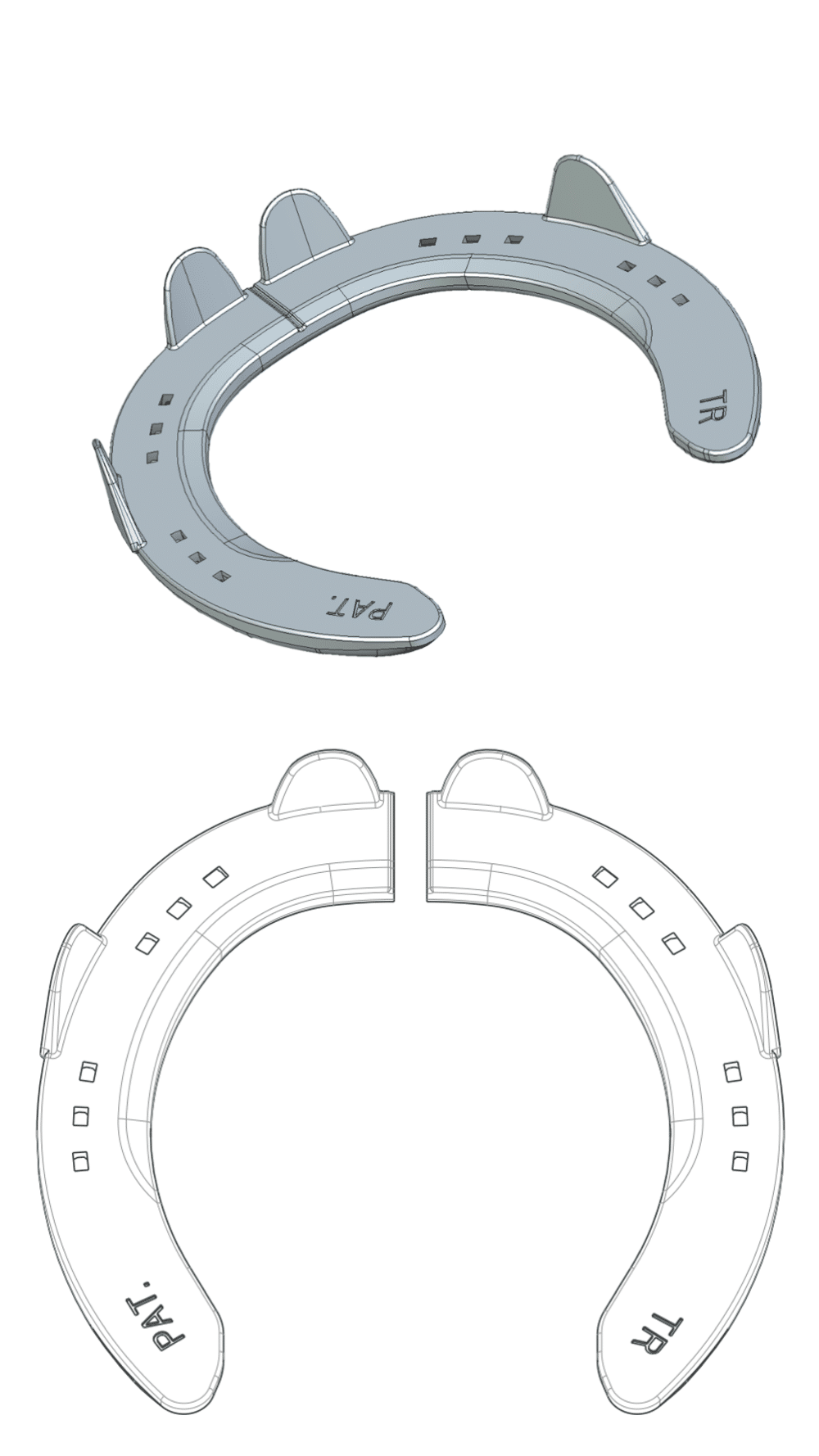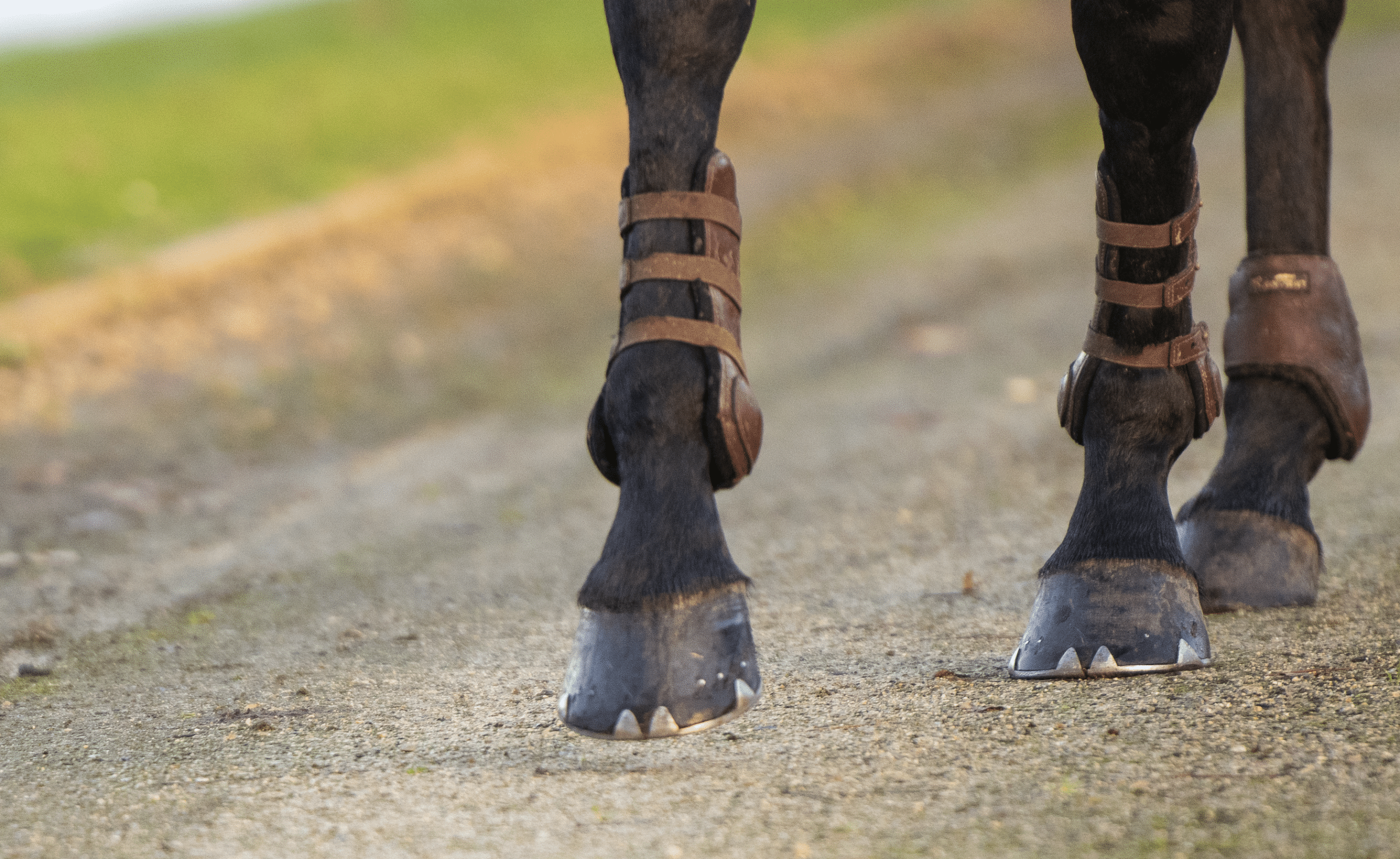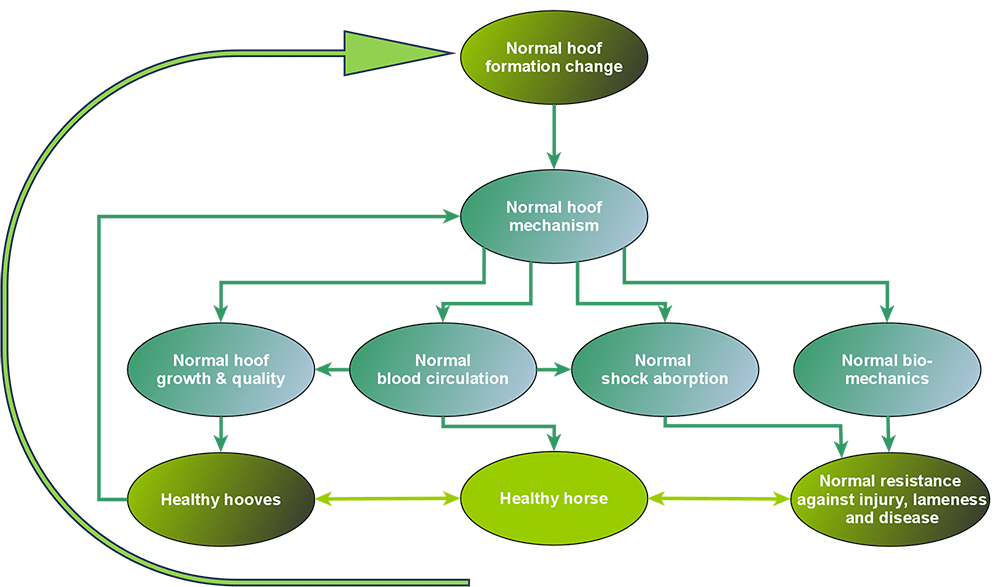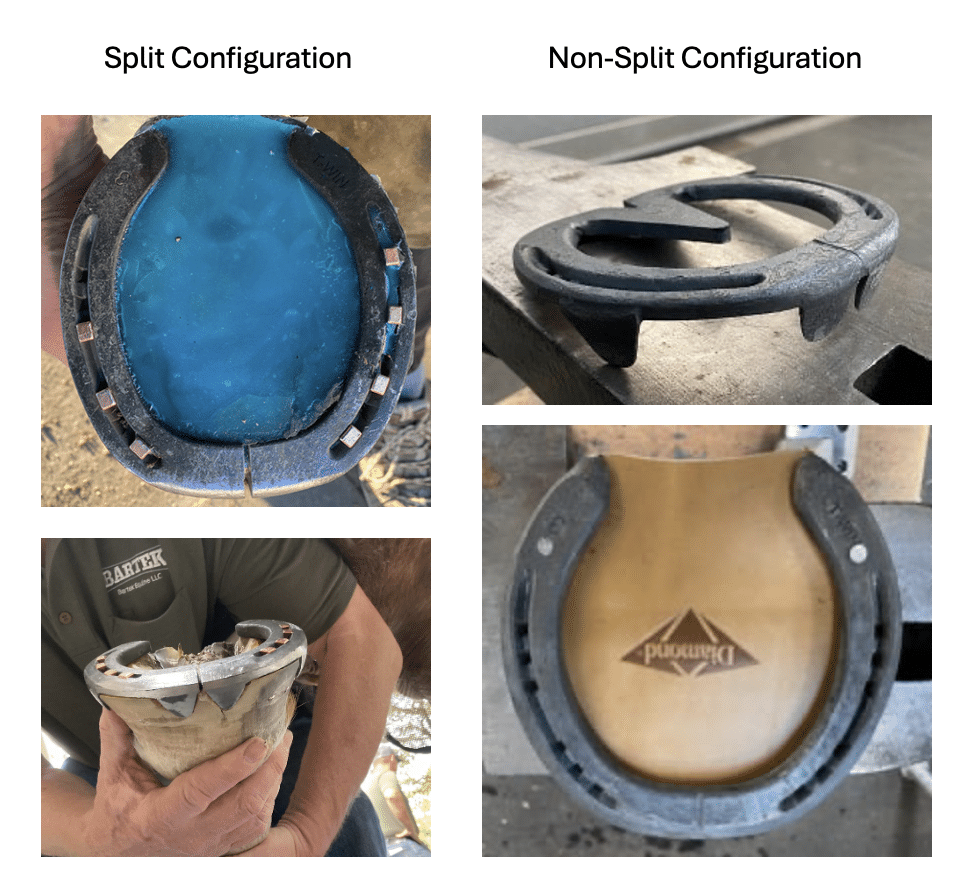Twin™ Shoes: Barefoot Benefits, Steel Protection
Learn more about Twin Shoes:
- WHAT they are
- Features
- HOW they allow the hoof to maintain barefoot flexibility
- HOW they benefit the hoof
- When to use (and when not to use)
- How they are applied (compared to traditional horseshoes)
- WHAT to expect (by when) with Twin Shoes

What are Twin™ Shoes?
Twin shoes are nail-on steel shoes that have been engineered for optimal functioning and stability in a split-shoe configuration. The two equal halves (branches) created during the shoeing process by splitting the shoe at the toe can then move independently, allowing the hoof mechanism to function naturally as in barefoot while protecting the hooves as traditional shoes do. Due to its unique design, the Twin Shoe is a very versatile shoe providing optimal stability of the hoof in a non-split configuration and allowing optimal mobility of the hoof in a split configuration.

Twin™ Shoe Features
Twin™ Shoes have several features built-in to ensure the optimal functioning and stability of the split-shoe concept. The patented front clips and the dual cutting grooves clearly distinguish Twin™ Shoes from other shoes. In addition Twin™ Shoes also have several features which make it easier for the farrier to work with Twin™ Shoes.
The two front clips prevent the foot from sliding forward off the shoe and provide a larger surface (than with one toe clip) limiting focal pressure and providing more support at push-off.
The cutting grooves on both the support and the ground-facing side of the shoe provide an easy guideline for the unique feature of the shoe: after nailing the shoe on, it is split, creating two equal halves firmly held in place with each one front and one side clip and with nails.
Other features of Twin™ Shoes include a non-centered crease, pitched nail holes, sweep, pencilled heels etc…

How do Twin™ Shoes work?
Although the hoof is often perceived as hard and rigid, it is actually a fairly flexible structure that can deform (change in geometry) during landing, loading and unloading of the foot/limb. This deformation of the hoof during movement is 3-dimensional (heel movement, side-to-side movement and backward-downward movement) and viscoelastic (i.e., able to dissipate energy and self-reversing) and is called the hoof mechanism.

Twin™ Shoe Benefits
Research (both academic research and clinical field trials) has shown that Twin Shoes allow the hoof mechanism to function normally as in barefoot (as opposed to traditional shoes which limit the hoof mechanism by locking the hoof in a one-piece shoe) which in turn creates a sustainable system for long term health of the hooves and the horse.
- Hoof Mechanism: as the shoe is split, the flexible movement along the 3 dimensions is unobstructed.
- Blood Circulation: the Twin™ Shoe allows the hoof to freely contract and expand creating a normal blood pumping function.
- Hoof Growth, Shape & Quality: the normal blood circulation supports the transport of oxygen and nutrients and waste deportation improving hoof growth and quality. In addition, the normal mechanical stimulus from the elastic deformation of the hoof capsule allows for additional proper hoof horn growth and quality. As the shoe (branches) move with the hoof there is less friction and hoof growth/wear is more balanced.
- Shock Absorption: as hoof expansion and blood circulation can function without obstruction, the hoof can fully utilize its shock absorption capacity.
- Biomechanics: as the proper balance (side to side and front to back) of the internal structures and especially the position of the coffin (hoof) bone is maintained, less stress/strain is transferred to these structures (bones, joints, tendons, and ligaments) decreasing the chance of injury.

Recommended Uses
Twin™ Shoes are very versatile shoes that can be used for a range of conditions and situations whether in a non-split shoe configuration when there is a need for maximal stability and/or protection or in a split-shoe configuration maintaining or regaining the function and mobility of the hoof. The Twin shoe split configuration is often recommended in the following situations:
How are Twin™ Shoes applied?
In general, Twin™ Shoes are applied similarly to traditional nail-on shoes but are split at the toe after nailing on. To ensure the proper functioning and stability of Twin Shoes, a few subtle but important differences to traditional shoeing (such as perimeter fit, clip setting, nail choice and pattern, …) need to be respected in the shoeing process. Specific Twin™ Shoeing application guidelines have been developed, making it easy for the farrier to understand and become familiar with these differences.
What to Expect
Depending on the starting condition of the foot, the usage of the shoes typically results in improvement within the first 1 to 90 days, with ongoing improvement occurring over the next 180 to 240 days.
Immediate effects (week 1-2) with Twin™ Shoes: you may feel and see the horse adjusting to the new feel and movement of his feet, the horse may look like he is searching on how to place his feet in a correct and balanced way from the new proprioceptive input he is receiving. Hoof capsule relaxation often takes place with opening up of the toe gap even within a couple of days.
Short Term (week 3-12) into Twin™ Shoes: The gait of horses with short stridedness, mild gait irregularity and certain lameness issues may improve significant during this time with longer stride length, more freedom in the shoulders and reduced lameness. The hoof capsule starts to change but as old, weaker and flared hoof walls are growing out some branch loss can be experienced. For this reason, in combination with increased hoof growth rate we see with Twin™ Shoes, we recommend shorter shoeing intervals (every 4 weeks) instead of the standard 6-week shoeing interval.
Mid Term (week 12-34) into Twin™ Shoes: you will notice continuous improvement in gait quality, lameness (if any) and hoof quality, shape and balance.
Long Term (week 34 onwards) into Twin™ Shoes: most hoof health parameters will start stabilizing by now, generally the toe gap will not widen up to more than a ¼ inch during the standard 6-week shoeing intervals and the shoe remains nicely fixed on the stronger hoof. Ongoing improvement (although slower) may still be seen at this point in time.
Going back from Twin™ Shoes to traditional shoes the improvements described above will gradually disappear again.